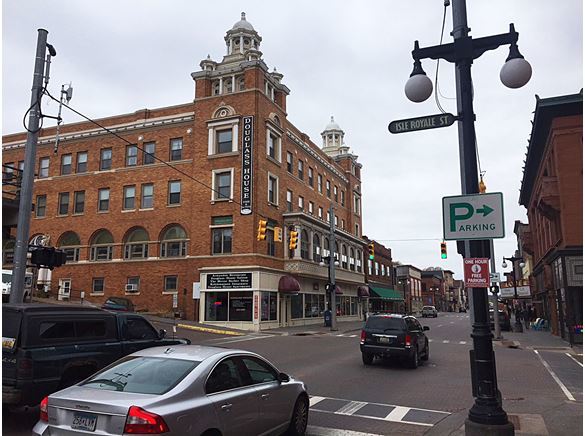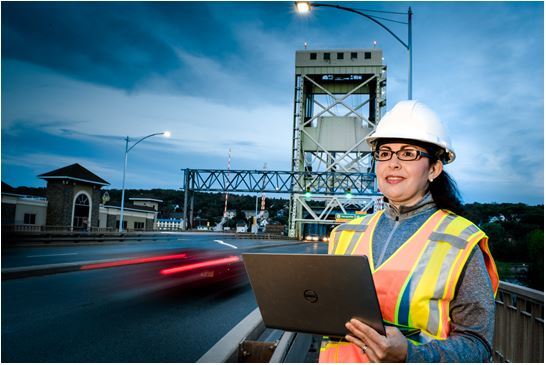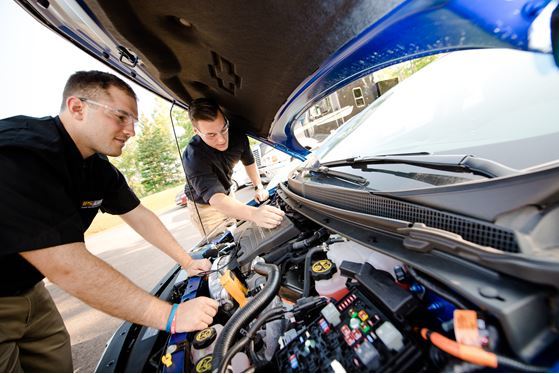News - From new traffic signals to mumble strips, safety is a focus for MDOT
Michigan DOT sent this bulletin at 11/09/2018 09:27 AM EST

|
|
Having trouble viewing this email? View it as a Web page. |
FOR IMMEDIATE RELEASE FRIDAY, NOVEMBER 9, 2018
CONTACT: Dan Weingarten, MDOT Office of Communications, 906-250-4809
weingartend@michigan.gov
From new traffic signals to mumble strips,
safety is a focus for MDOT
Safety features:
- Safety is a top concern at the Michigan Department of Transportation (MDOT).
- MDOT safety initiatives across the Upper Peninsula are part of a larger effort to help move the state along the path Toward Zero Deaths (TZD).
- MDOT's Superior Region is working on many fronts to improve road safety, including installing new traffic signal technology that can communicate with vehicles.
November 9, 2018 -- From high-tech to low, The Michigan Department of Transportation (MDOT) has implemented projects across the Upper Peninsula this year designed to make highways safer - now and in the future.
MDOT safety projects are part of a larger effort to help move the state "Toward Zero Deaths" (TZD). Since 2010, MDOT has collaborated statewide with law enforcement officials and first responders to promote this important national highway safety strategy, including posting year-to-date fatality totals in their offices and on roadside dynamic message signs. These efforts are raising awareness of traffic safety challenges in Michigan.
Beyond the statewide education and awareness campaign, MDOT's Superior Region, which encompasses the entire U.P., has undertaken several other safety initiatives.
"Superior Region is pushing forward the TZD initiative on many fronts," said Justin Junttila, regional traffic and systems operations specialist with MDOT. "Some of them are relatively simple while others are technically complex."
Tapping into supplemental road funding provided by the Legislature in 2017 that was earmarked specifically for connected and autonomous vehicle research, the region was able to upgrade five traffic signal locations in the Houghton area this season. This work will help future vehicles "talk" to the traffic signals using dedicated short-range radio communications systems.
The vision: a transportation system that is aware of what's happening and can communicate that info quickly to vehicles or drivers. Through in-car warnings, drivers could be alerted to potential crash hazards such as merging trucks, cars in the driver's blind spot, or a vehicle ahead braking suddenly. By communicating with roadside infrastructure, drivers could be alerted when they are entering a school zone, if workers are on the roadside, or if an upcoming traffic light is about to change.
Vehicles with the ability to communicate with the road infrastructure around them are rare today, but universities and auto companies are hard at work developing applications for future safety and mobility. Michigan Technological University (MTU) in Houghton is already involved. The university has a fleet of eight 2017 Chevrolet Volt hybrid cars outfitted with a variety of vehicle-to-vehicle (V2V) and vehicle-to-infrastructure (V2I) equipment.
MTU professor Aurenice Oliveira and her colleagues are researching connected and autonomous vehicle systems. Her group is developing routing protocols to optimize data flow in the new networks that will develop between vehicles and infrastructure.
Oliveira said there are many challenges to developing this technology, some of them particularly acute in the U.P. Connected vehicle applications require a minimum number of vehicles with V2V communication capability operating at the same time, but low population density and low income could hinder adoption regionally. Plus, autonomous and connected vehicles need to be able to sense their environment and that ability can be frustrated by adverse weather conditions, of which the U.P. has its share. Still, she is convinced the technology has great safety potential - perhaps to reduce vehicle crashes by 80 percent.
"Connected vehicle safety applications reduce crashes by enabling drivers to have more awareness of hazards and situations they may not be able to see," Oliveira said. "Moreover, connected vehicle technologies also have the potential to optimize traffic, reduce congested areas, and promote reduction of fuel consumption."
The upgraded signals on M-26 at Sharon Avenue, Razorback Drive, and Green Acres Road, and on US-41 at Isle Royale Street and MacInnes Drive will help provide a real-world testing environment for MTU researchers as they help advance connected and automated vehicle tech. Units like those in the new signals will allow field experiments to test algorithms that, so far, have only been used in simulations. MDOT policy is to include these kinds of upgrades on all new signal installations.
"This is the new standard for connected infrastructure that will be installed whenever MDOT modernizes signals," explained Junttila. "It's comparatively lower cost to do that instead of retrofitting."
The investment is expected to pay off in long-term safety benefits as connected vehicles become more common. From optimizing traffic flow to making drivers aware of potential crash hazards, V2I has potential to increase safety for all roadway users, not just drivers who have connected vehicles.
Other TZD efforts over the past year have been lower-tech but have high potential for crash reduction and increased safety, including:
- Mile markers installed on US-2 and M-28 have been used hundreds of times by police, fire, EMS, and other first responders. Police officers use the markers regularly for reference points on traffic stops. Callers use them as markers when reporting erratic drivers, crashes or other issues.
- Delineators (posts with reflectors to outline the roadside in low-visibility conditions) were installed along US-2 from St. Ignace to the Wisconsin state line on both sides of the road in higher-speed areas. These are designed to reduce the number of lane departure crashes - the leading cause of crashes in the region.
- Mumble strips are variable-depth rumble strips that can be installed on narrower asphalt shoulders (less than 6 feet). Prior to this, MDOT only used rumble strips on wider shoulders. Mumble strips, tested recently in Minnesota, are designed to create less noise outside of the vehicle but have the same effect of alerting the driver. They are being piloted on M-28 and M-123 this fall - the first time they've been used in Michigan.
The statewide TZD safety campaign is based on the national strategy on highway safety intended to influence driver behavior and improve safety. While the number of fatalities occurring on U.S. highways dropped slightly last year, roadway safety remains one of the most challenging issues facing Michigan and the nation. The number of people killed in traffic crashes in 2017 was 37,133, down 1.8 percent from 2016, according to preliminary statistics from the National Highway Transportation Safety Administration (NHTSA). Still, it was the second-highest number reported by NHTSA over the previous 27 years. Pedestrian deaths remain high; distracted driving is an increasing concern.
TZD efforts may be showing some gains regionally, too. As of late September, there were 24 traffic fatalities in the U.P., compared to 29 at the same time in 2017.
"The reasons for the fluctuating levels in fatalities and serious injuries may be very complicated, and NHTSA is currently studying them," Junttila said. "But we're taking a proactive approach to safety, working to address factors that we know contribute to crashes in the U.P."
To learn more about the national strategy, go to www.towardzerodeaths.org. For more information on the state campaign, visit MDOT's website at www.michigan.gov/zerodeaths. For more details on how mobility experts will leverage the traffic signals in Houghton in their research, go to https://bit.ly/2PPrpql.
###
Visit MDOT's Mi Drive traffic information website: www.michigan.gov/drive
www.twitter.com/MDOT_UP | www.facebook.com/MichiganDOT | www.youtube.com/MichiganDOT

Isle Royale Street in Houghton, one of the intersections that will be upgraded with new vehicle-to-infrastructure (V2I) capabilities – part of regional safety initiatives by the Michigan Department of Transportation (MDOT). (MDOT photo)

Michigan Technological University (MTU) researcher Aurenice Oliveira and her colleagues are studying connected and autonomous vehicle systems in Houghton. (MTU photo)

MTU's Advanced Power Systems Labs work with a fleet of Chevy Volts to push autonomous and electric vehicle technology forward. The vehicles will have the capability to communicate with new traffic signals installed by MDOT in Houghton. (MTU photo)
EDITORS:
Higher resolution versions of the accompanying photos are available:
